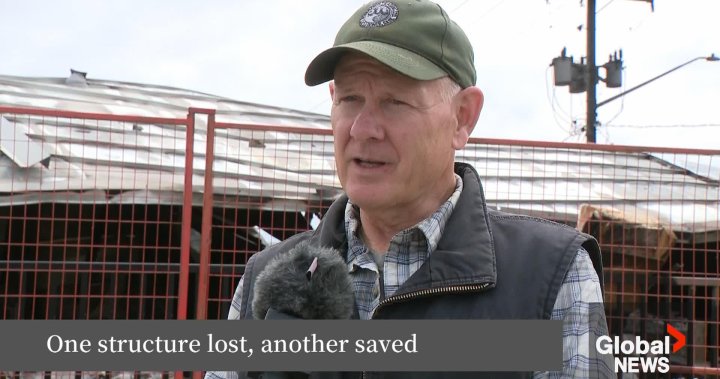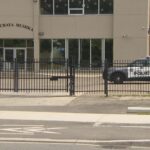I’ve just returned from La Ronge, Saskatchewan, where the community is grappling with a profound loss after wildfires tore through one of northern Saskatchewan’s most iconic establishments. Standing amid charred remnants where the La Ronge Trading Post once stood, I witnessed firsthand both devastation and remarkable resilience.
“This wasn’t just a store,” owner Andrew Charles told me, his voice steady despite the circumstances. “This was a piece of northern Saskatchewan’s history.”
For over 70 years, the La Ronge Trading Post served as more than a retail space—it was a cultural landmark, community hub, and economic cornerstone in the region. The business, established in 1949, grew from humble beginnings into a northern institution known for its eclectic inventory that ranged from fishing tackle to Indigenous crafts.
Charles, who purchased the business in 2003, continued its tradition as a place where locals and tourists alike could find everything from essential supplies to unique northern keepsakes. Now he faces the daunting prospect of rebuilding from ashes.
The destruction came swiftly when wildfires swept through the area last week, part of a devastating pattern of wildfires that have affected communities across northern Saskatchewan this summer. Saskatchewan Public Safety Agency reports indicate more than 120 active fires still burning across the province, with La Ronge among the hardest-hit communities.
“I got the evacuation order and had minutes to decide what to take,” Charles explained as we walked through the remains of his business. “How do you choose what to save from decades of history?”
The Saskatchewan Public Safety Agency has confirmed that multiple structures in the La Ronge area suffered significant damage, with the Trading Post among the total losses. Provincial wildfire maps show several fires still burning within kilometers of the community, though immediate threats have subsided as firefighting efforts continue.
For northern communities like La Ronge, the Trading Post represented more than commerce—it embodied cultural continuity. Local artisan Sarah McKenzie, who sold handcrafted beadwork through the store, described it as “the place where our stories were shared through our crafts.”
The economic impact extends beyond the physical building. The Trading Post employed twelve local residents and provided market access for dozens of regional artisans and suppliers. Tourism operators relied on the store as an essential stop for visitors heading into Saskatchewan’s northern wilderness.
Mayor Colin Ratushniak of La Ronge acknowledged the significance of the loss during an emergency community meeting held yesterday. “The Trading Post was part of our community’s identity. Its destruction is felt by everyone, but I’m confident in our collective ability to support Andrew and see this landmark rise again.”
Beyond the immediate fire damage, northern Saskatchewan faces broader challenges from this summer’s wildfire season. Provincial data indicates this year has seen nearly double the five-year average of hectares burned, with climate scientists pointing to increasingly warm, dry conditions as contributing factors.
Environment Canada meteorologist Terri Lang noted in a recent briefing that “northern Saskatchewan has experienced precipitation levels 40% below seasonal averages, creating ideal conditions for wildfire spread.” These conditions mirror troubling patterns seen across Canada’s northern regions in recent years.
For Charles, the path forward remains uncertain but not without hope. Insurance assessments are underway, though he acknowledges the true value of what was lost extends beyond financial measurements.
“Some things can’t be replaced—the photos on the walls, handwritten ledgers from the 1950s, relationships built over decades,” Charles said. “But we’ll preserve what matters most—the spirit of this place.”
Community response has been swift. A GoFundMe campaign organized by the La Ronge Chamber of Commerce has already raised over $45,000 to support rebuilding efforts. Local businesses have offered temporary space for Charles to maintain some operations while planning reconstruction.
Indigenous leaders from nearby Lac La Ronge Indian Band have also pledged support. Band Councillor Linda Charles (no relation to the owner) told me, “The Trading Post has always respected and showcased our artists and traditions. We stand ready to help however we can.”
The loss of the Trading Post highlights the vulnerability of remote northern communities to wildfire threats. Provincial officials acknowledge that climate change is intensifying these risks, with Saskatchewan’s boreal regions experiencing longer, more severe fire seasons.
As evacuation orders gradually lift and residents return to La Ronge, the community faces the complex process of recovery. For Charles, rebuilding represents more than restoring a business—it’s about preserving a legacy.
“We’ll rebuild something that honors what came before,” he told me as our conversation ended. “The Trading Post has survived changing times for seven decades. This is just another chapter in its story.”
Standing there amid the ruins, watching Charles pick up a partially burned carved wooden bear—one of the few items salvaged—I was reminded that in communities like La Ronge, resilience isn’t just a concept. It’s a daily practice.






